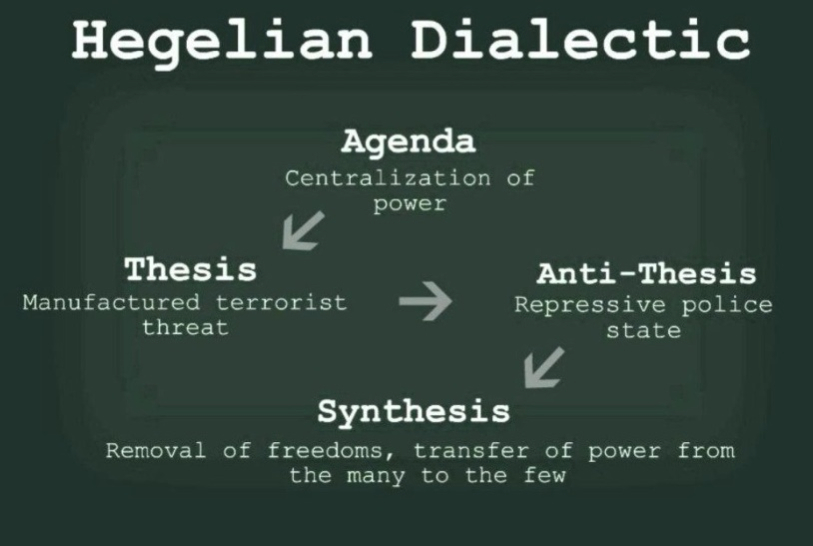Hegelian dialectic is a method to help people realize the problems that were a consequence of an event and help them come up with ideas that can solve the problems.
It consists of three dialectical stages:
- Thesis that gives rise to the reaction or let’s say a problem
- Antithesis which contradicts or negates the thesis
- Synthesis which resolves the tension between the thesis and antithesis
The simpler way to look at it is to change thesis-antithesis-synthesis into problem-reaction to the problem-solution for the problem.
An example of the Hegelian dialectic:
Although it is called the Hegelian dialectic, Hegel did not come up with this dialectic as we know it today. He did come up with something similar but not exactly the same. He didn’t use the terms thesis, antithesis or synthesis but the terms: abstract, negative and concrete. The flaw in that formula is that it is too abstract and lacks the negative of trial, error, and experience. Heinrich Moritz Chalybäus was a german philosopher who thought of the formula for the Hegelian dialectic as we know today (thesis-antithesis-synthesis)
Hegel had ascribed that terminology to Kant. Continuing Kant’s work a german philosopher Fichte greatly elaborated and popularized the synthesis model.

